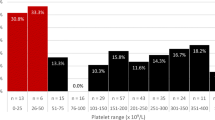Abstract
Emergency department (ED) patients routinely undergo placement of a saline lock device (SLD) with the aspiration of blood for laboratory testing. Drawing blood through a SLD may result in hemolysis of sample, repeated venipuncture and increased ED length of stay (LOS). The objective of this study was to examine if separate venipunctures for intravenous (IV) access and laboratory studies decrease the rate of hemolysis and ED LOS. The study was conducted at an urban university level 1 trauma center with an ED volume of 55,000. We compared the rate of hemolysis and ED LOS before and after mandating the use of separate venipunctures for IV access and laboratory studies over 1 month. Venipuncture was performed utilizing either a 21 ga needle or an IV catheter (BD Insight Autoguard) with a needless vacutainer. The incidence of hemolysis was calculated and a Student’s t test was used to compare groups. The potassium sample redraw and processing time was observed. Blood was aspirated from 315 patients using the SLD. A baseline hemolysis rate of 23.0% (16.7–29.1) was obtained, corrected to 6.7% after factoring a 29.2% redraw rate for critical potassium levels. In the following month, 2,564 samples were obtained using the butterfly needle with a hemolysis rate of 6.6% (5.5–7.5), corrected to 2.0% after applying the 29.2% redraw rate. Avoiding hemolysis, we saved 4.7% of our patients’ 56 min of ED stay, and avoided 185 retests over the month. In conclusion, venipuncture from a butterfly needle decreases the rate of hemolysis and may decrease the overall ED LOS.


Similar content being viewed by others
References
Arrants J, Willis ME, Stevens B, Gripkey L, Herman JA, Hernandez-Brooks L, Eaker JE (1999) Reliability of an intravenous intermittent access port (saline lock) for obtaining blood samples for coagulation studies. Am J Crit Care 8(5):344–348
Corbo J, Fu L, Silver H, Atallah H, Bijur P (2007) Comparison of laboratory values obtained by phlebotomy versus saline lock devices. Acad Emerg Med 14(1):23–27
Grant MS (2003) The effect of blood drawing techniques, equipment on the hemolysis of ED laboratory blood samples. J Emerg Nurs 29(5):401
Herr RD, Bossart PJ, Blaylock RC, Kroger K, Ash O (1990) Intravenous catheter aspiration for obtaining basic analytes during intravenous infusion. Ann Emerg Med 19(7):789–792
Himberger JR, Himberger LC (2001) Accuracy of drawing blood through infusing intravenous lines. Heart Lung 30(1):66–73
Lowe G et al (2008) Nursing blood specimen collection techniques, hemolysis rates in an emergency department: analysis of venipuncture versus intravenous catheter collection techniques. J Emerg Nurs 34(1):26–32
Mohler M, Sato Y, Bobick K, Wise LC (1998) The reliability of blood sampling from peripheral intravenous infusion lines. Complete blood cell counts, electrolyte panels, and survey panels. J Intraven Nurs 21(4):209–214
Ong ME, Chan YH, Lim CS (2008) Observational study to determine factors associated with blood sample haemolysis in the emergency department. Ann Acad Med Singapore 37(9):745–748
Pretlow L et al (2008) A quality improvement cycle: hemolyzed specimens in the emergency department. Clin Lab Sci 21(4):219–224
Conflict of interest
None.
Author information
Authors and Affiliations
Corresponding author
Rights and permissions
About this article
Cite this article
Straszewski, S.M., Sanchez, L., McGillicuddy, D. et al. Use of separate venipunctures for IV access and laboratory studies decreases hemolysis rates. Intern Emerg Med 6, 357–359 (2011). https://doi.org/10.1007/s11739-011-0568-9
Received:
Accepted:
Published:
Issue Date:
DOI: https://doi.org/10.1007/s11739-011-0568-9




